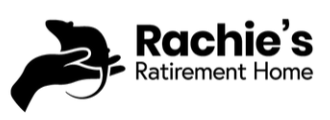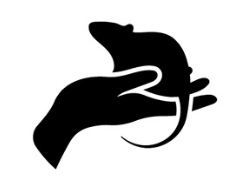The Social Rat #5: Ways in which rats are known to be social
This article is the fifth in the Social Rat Series. In it, I will continue to discuss the specific ways that rats demonstrate social behaviour. Several of these behaviours were the subject of the fourth article in this series, so, you might want to refer to that for a general introduction to these behaviours.
Before we begin, I’d like to quote Ashleigh Warner as a reminder that when dealing with any animal - rat, dog, human, or otherwise, it’s the need that we need to address, not the behaviour:
“Beneath every behaviour is a feeling [emotion] and beneath every feeling is a need. And when we meet that need, rather than focus on the behaviour, we begin to deal with the cause, not the symptom.”
Nurturing:
The most common expression of nurturing behaviour is – as we might expect – during reproduction. The mothering instincts of the female rat are driven by the same neurobiological mechanisms that we see in human mothers.
Oxytocin (a hormone that acts as a neurotransmitter in the brain to promote bonding) is released during labour, birthing, and nursing. It cements future interaction between mother and babies while at the same time decreasing fear and stress. Oxytocin also acts on the organs of reproduction and is involved in orgasm (yes – rats have them too!), birthing and lactation. It is oxytocin that initiates the flow of milk from the mammary glands in response to the babies suckling. However, nurturing behaviour in rats extends well beyond the mother and baby relationship. Related females, who are also part of the mother’s social group, will frequently provide ‘nanny’ services, to allow the mother to rest or be safely absent from the nest. This behaviour is seen in both wild and domesticated rats.
At the other end of life, behaviour that looks like nurturing – like food sharing – is sometimes seen between individuals when one becomes sick or is physically vulnerable. This is actually a helping behaviour, falling within the rules of rat reciprocity:
I will help you because you helped me.
I will help you because someone helped me.
Rats also weigh the cost versus benefit of helping out another rat in need. Rats are demonstrably more likely to share food with a rat who is hungry. Hungry rats (apparently) smell different and this may be how one rat determines that another is hungry.
The helping rat seems to have an inherent understanding that the benefit of helping someone who really needs help is a greater likelihood of reciprocation. Elderly and sick rats are more likely to be hungry than their younger, fitter cage mates, and this may be why we see this behaviour more in pet rats in relation to vulnerable recipient rats.
https://journals.plos.org/plosbiology/article?id=10.1371/journal.pbio.30... The smell of hunger: Norway rats provision social partners based on odour cues of need
Aggressive protectiveness:
Protective behaviour in rats is seen in several contexts:
Pregnant or nursing does.
Related females defending burrows where babies are being raised.
Males defending mating rights (wild and domesticated males in enclosures with females when an unknown male is introduced).
Males defending territory (wild males in an enclosure with no females when an unknown male is introduced - domesticated males tend to be less aggressive in this situation, though some will display some aggressive posturing and may even fight).
Interestingly, in the wild in large colonies, males rarely fight other males from within the colony. Mating rights are shared, though a hierarchy system does exist, with alpha males mating first. Wild and domesticated rats tend not to fight over other resources such as food and shelter. It’s not uncommon for pet rats to take food out of each other’s mouths, a behaviour that would result in a fight in several other species, including dogs.
https://elifesciences.org/articles/54020 The Social Life of Norway Rats
Infanticide
The opportunistic killing of pre-weanling rats by males in the colony is a recognised phenomenon in wild rats. The purpose of infanticide is to bring the female (mother) back into heat – as oestrus is suppressed during lactation. The act of mating brings about a generalised cessation of infanticide in the male rat for a period that roughly coincides with birth through to weaning. This is one of the reasons why being mated by multiple males is favourable for the female. It reduces the number of males likely to kill the babies if the opportunity arises.
It may also explain why oestrus often synchronises between female rats who live together, meaning they will all come into heat around the same time. This will decrease further the likelihood of any individual female’s litter being the focus of infanticide as the effect is generalised. So, essentially, every male who mated any of the females will be less likely to practice infanticide on any of the resultant babies, regardless of whether they mated a specific female or not. However, infanticide is always a possibility where a male has not mated the female.
Female strategies to counter infanticide include hypervigilance, aggressive defence of the nesting chamber, nanny females (to avoid leaving the babies alone), and chemical signalling to the males that occurs during pregnancy.
https://www.sciencedirect.com/science/article/abs/pii/0031938488902545 Infanticide in rats: Male strategy and female counter-strategy
Sense of fairness
In science-speak, the sense of fairness is called inequity aversion. It is essentially a behavioural response to an unfair outcome, that is, one where – for the same effort – one individual receives less gain than another. In humans, unfairness is generally perceived by both individuals, causing discomfort for both the advantaged and the disadvantaged person. Inequity aversion has been studied in rats primarily from the perspective of the advantaged rat.
So, would a rat seek fairness for another rat when it was within their power to achieve it? The finding was that individual rats showed equity aversion to varying degrees. Meaning that, like empathy, a sense of fairness is demonstrated in degrees, rather than all or nothing. Inequity aversion is thought to be a necessary part of co-operation, and is seen in many co-operative species including primates, dogs, and rats.
https://psychologie.hhu.de/fileadmin/redaktion/Fakultaeten/MathematischNaturwissenschaftliche_Fakultaet/Psychologie/CompPsy/Papers/Oberliessen_et_al_20 16.pdf Inequity aversion in rats, Rattus norvegicus
Cannibalism
It is known from multiple anecdotes that pet rats sometimes carry out both burial and cannibalisation of their dead cage-mates. Cannibalism is described in wild rats in association with mothers cannibalising dead babies and, more rarely, killing and cannibalising living offspring. The latter only happens in specific circumstances where the female is malnourished or experiencing extreme threat or stress. I can find no reference to wild rats “tidying-up” dead adults, but the fact that these behaviours are seen in pet rats would suggest that they are instinctive.
Burying and cannibalisation of the dead are both behaviours that are displayed across many species – especially prey species – and are thought to be preventative measures to reduce the risk of a decaying body attracting predators. In times where food is in short supply, cleaning up after the dead also makes sense from a survival perspective, especially in a species that is known to feed on carrion. I’m sure we’ve all seen the media reporting on cannibal rats during the Covid19 pandemic when the food waste left in cities by humans has greatly reduced.
Although cannibalism can be distressing and traumatic to witness, it’s important to remember that behaviours are neither “good” nor “bad”. When an animal engages in behaviour, the behaviour is driven by emotion, and the emotion occurs because of a need. This brings us neatly back to where we started.
In our next and final article in this series, we will look at social bonding – the set of behaviours that rats engage in that create and cement relationships, and what those relationships might look like.
This article was written by the wonderful Alison Campbell and graciously shared with Rachie’s Ratirement Home as part of a collaborative effort to share knowledge and improve the lives of rats internationally. You can find more of Alison’s work at ratwise.co.uk/ including links to more high quality educational articles like this one for only a few dollars each, Alison’s latest book The New Scuttling Gourmet, which we highly reccomend to any rat owner looking to use diet as a means to improve the health and well-being of their rats, and links to the Ratwise community, where you can find articles and discussions led by a community of experienced and passionate rat owners, including videos on a range of topics by our very own Grover.
The article remains the Intellectual Property of Alison Campbell © April 2021. Thank you Alison!

